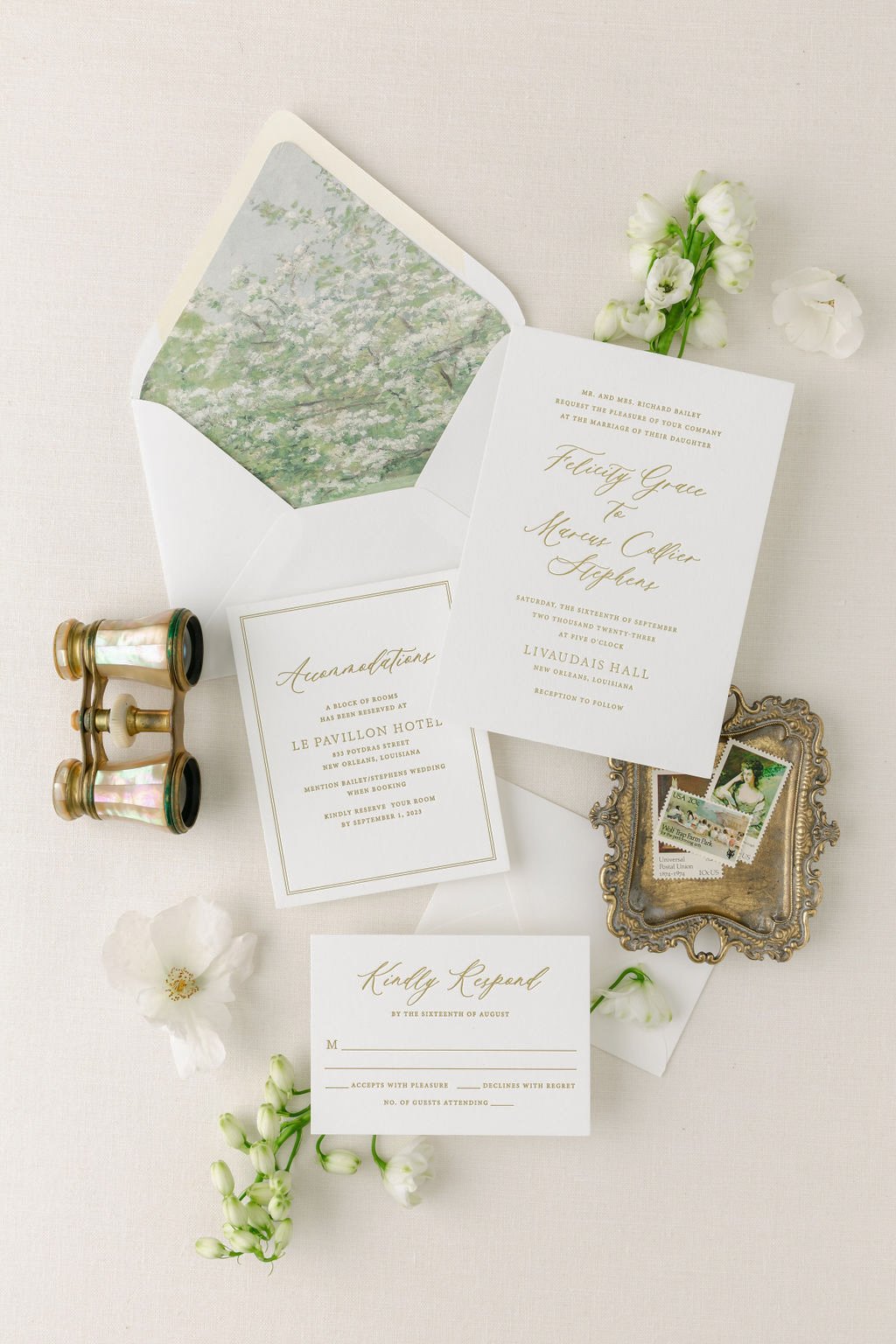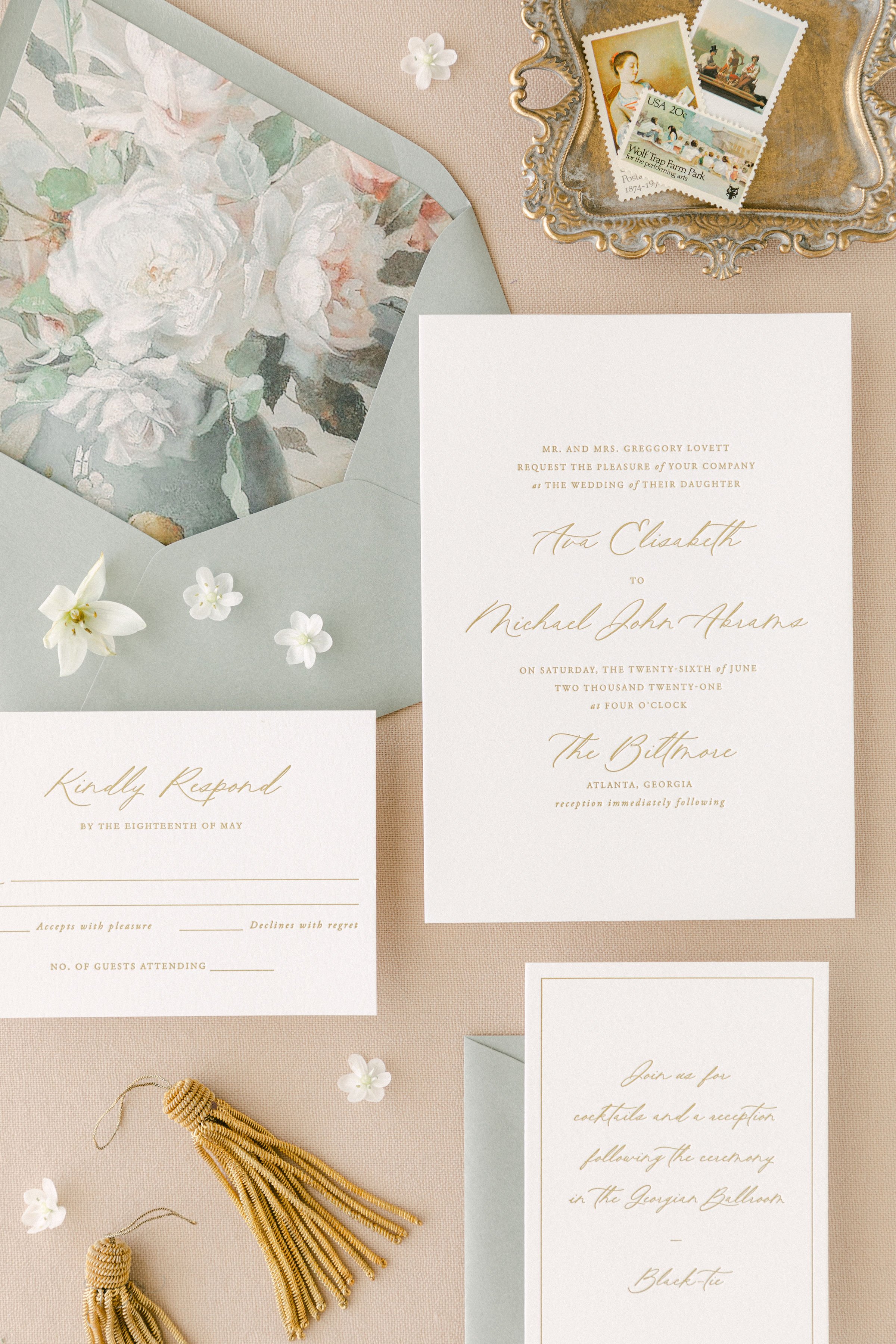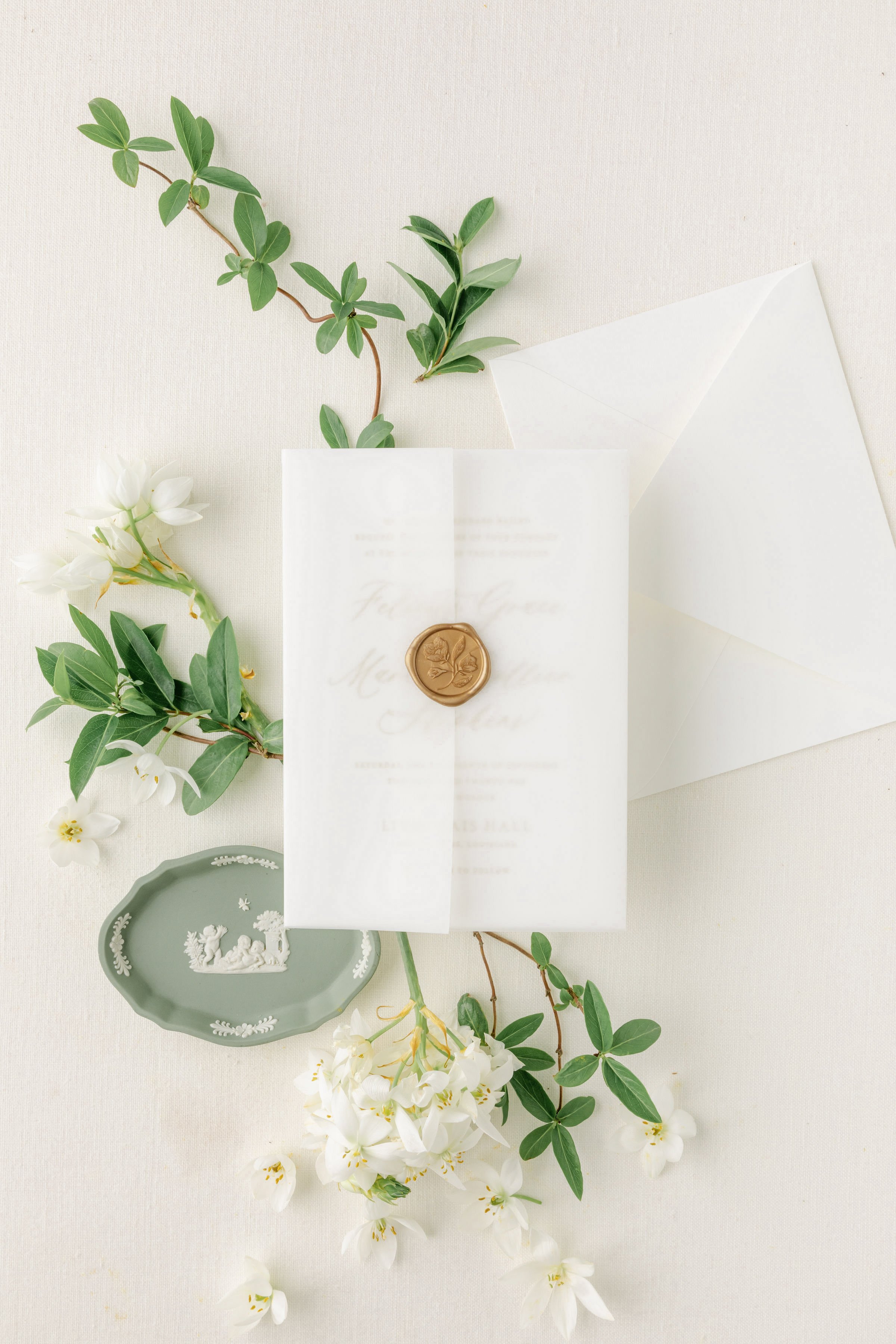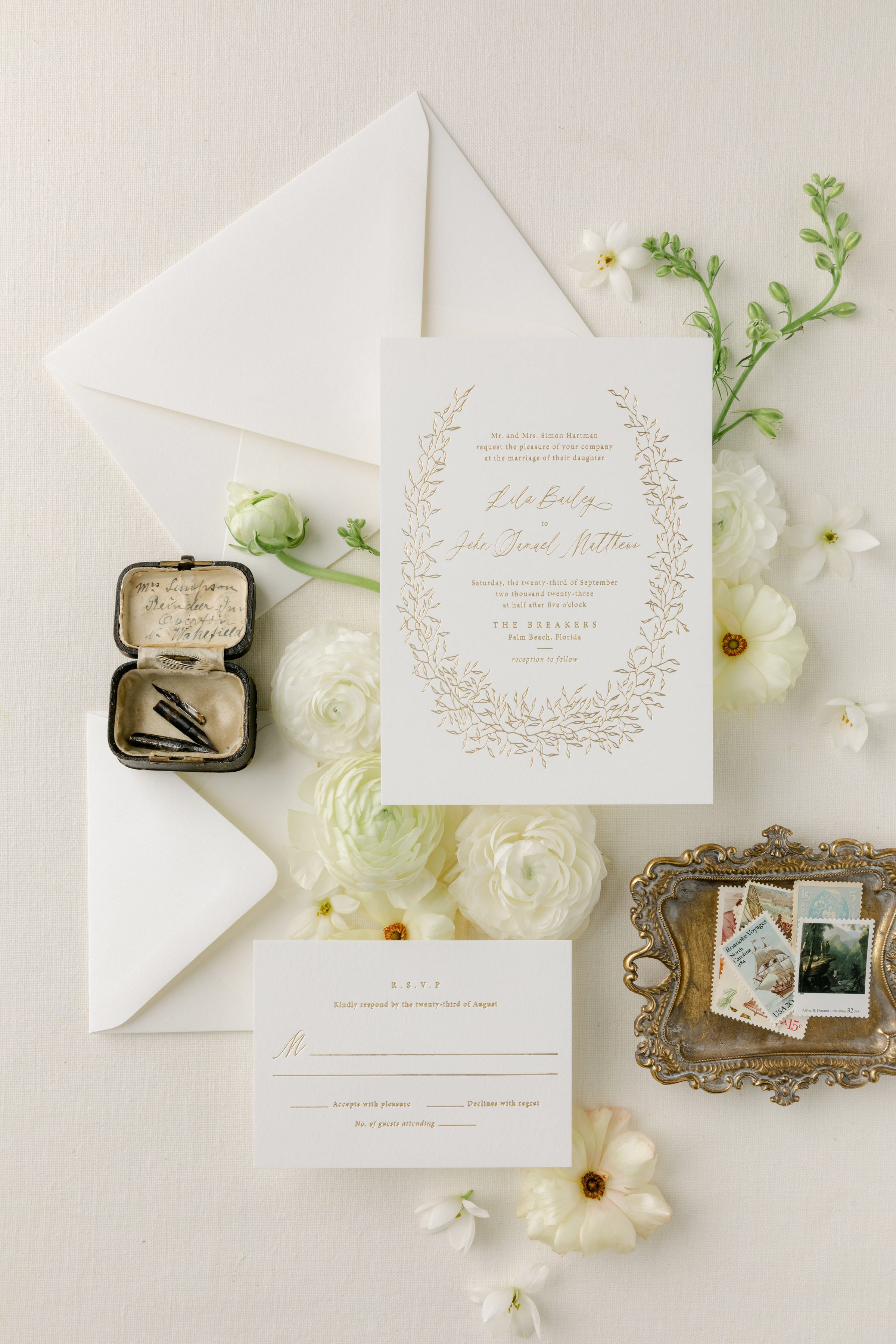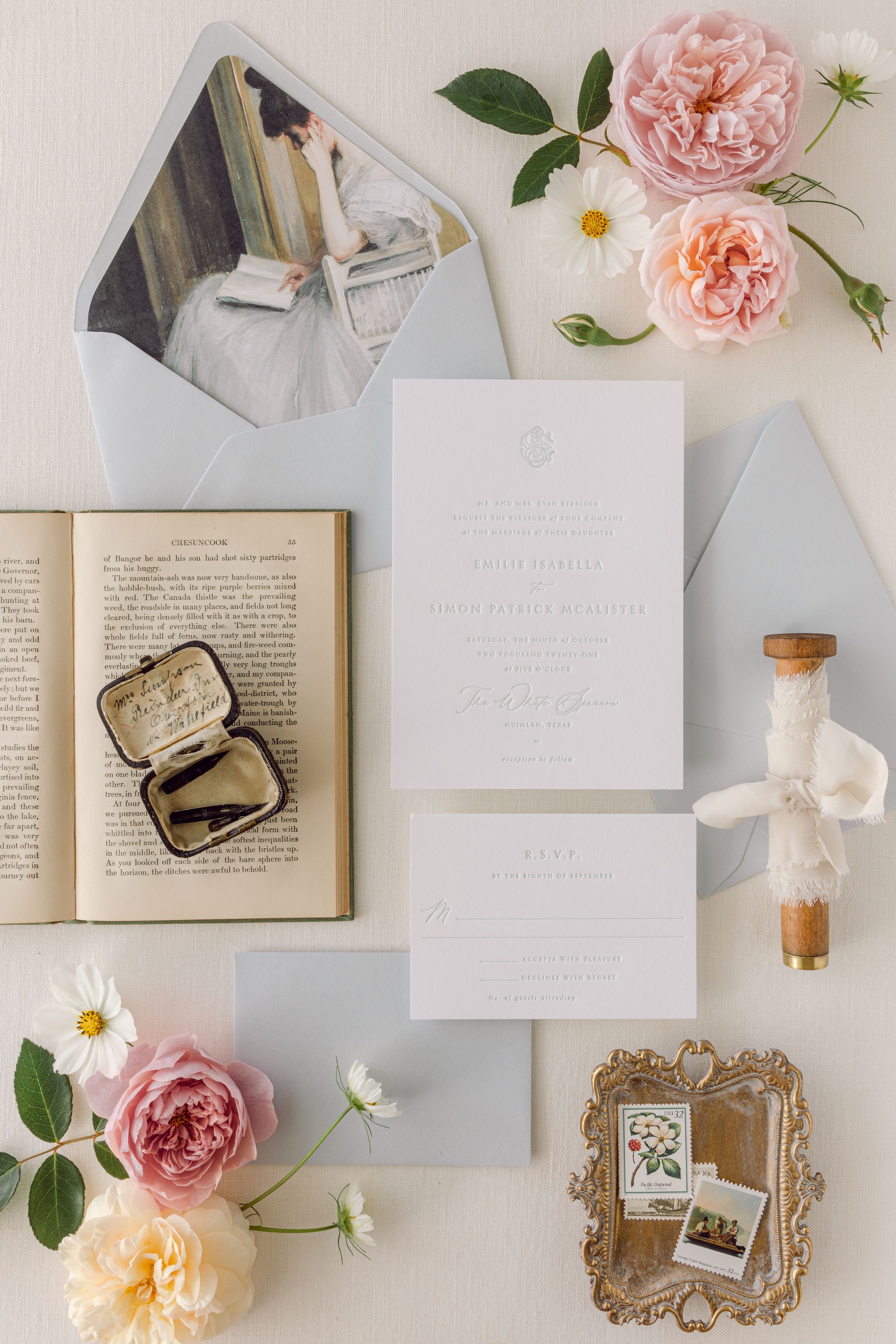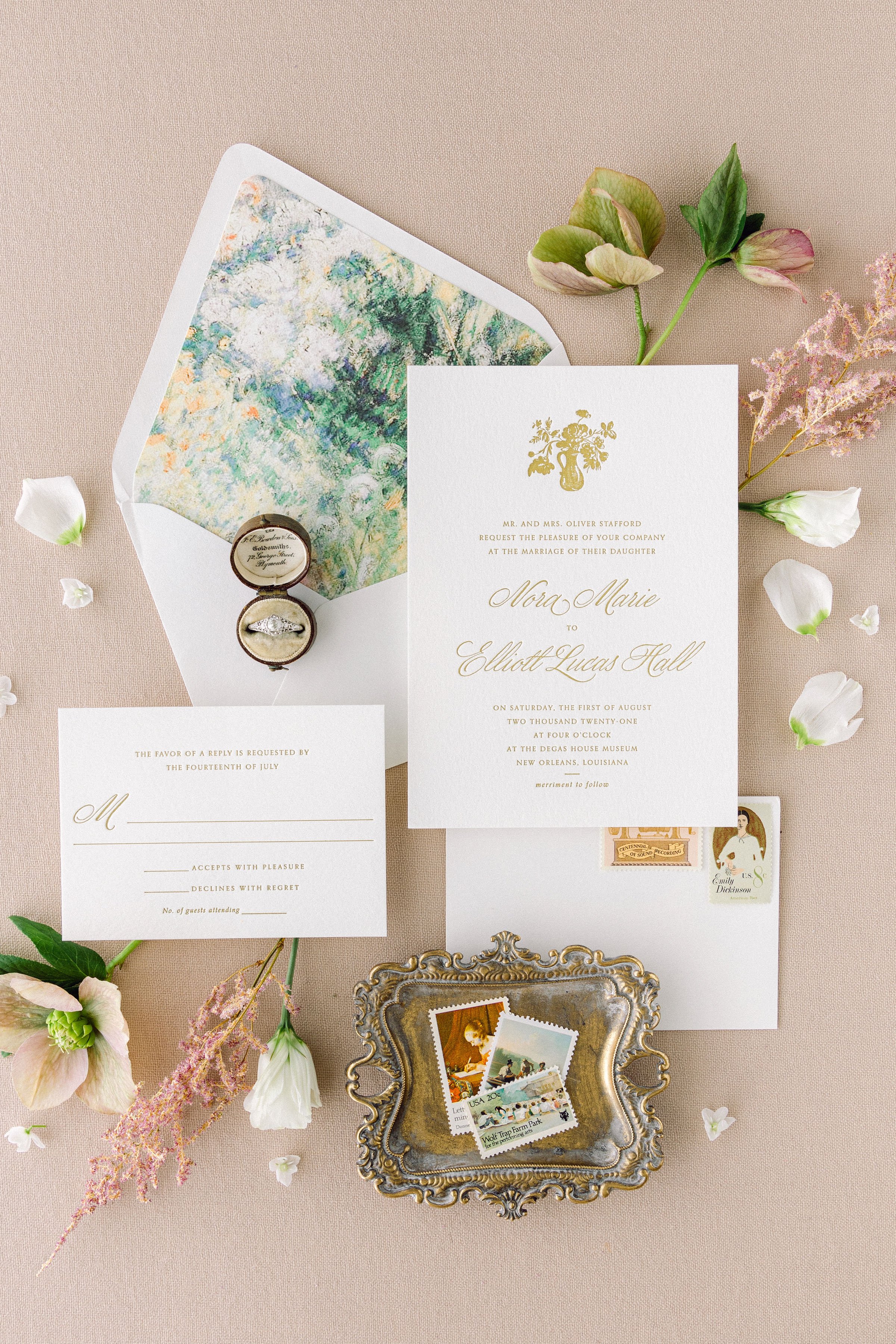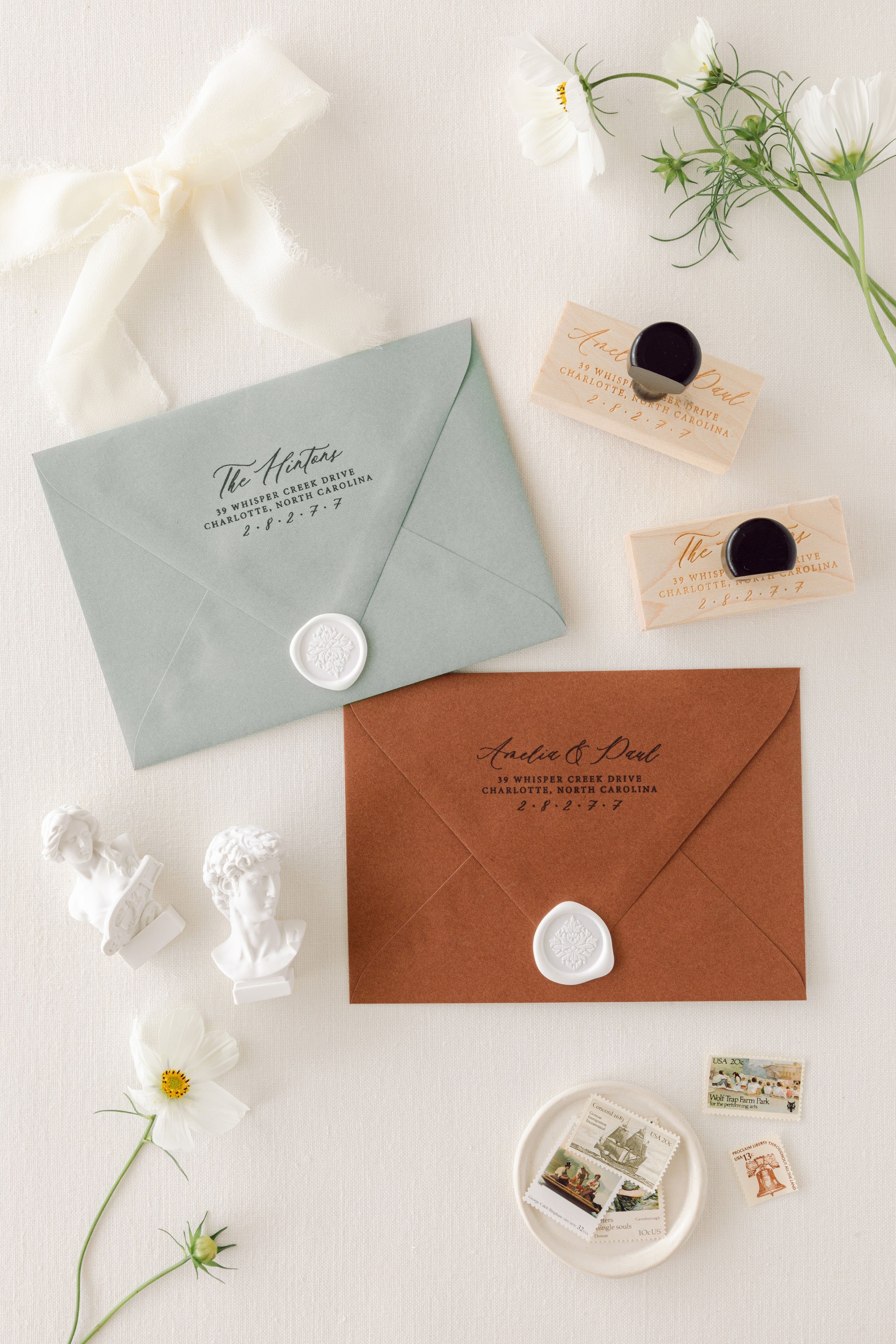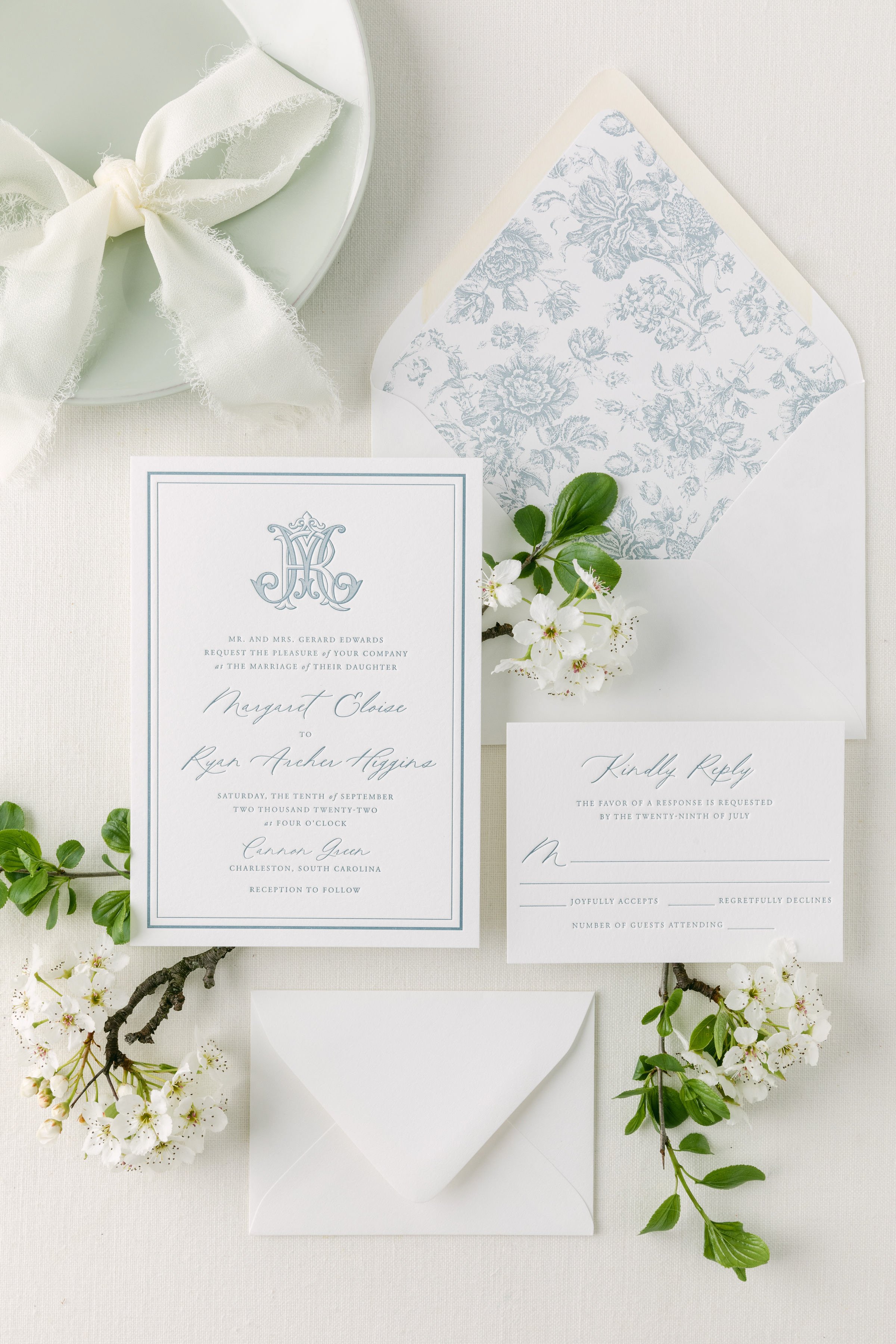What Wedding Invitations Include (and What Not to Include!)
After we have a cocktail (or two) to celebrate your engagement, it’s time to get down to business: your invitations. And today, I’m sharing the essentials of what wedding invitations include… and what not to include.
Hopefully, this roadmap will help you craft a carefully-worded invitation full of both charm and formality.
Shake out those nerves, and let’s break down everything you need for the classiest correspondence you’ll ever send.
In today’s post, you’ll learn two very simple concepts:
The basics of what wedding invitations include
And what not to include on your invites
What Wedding Invitations Should Include:
Wedding Hosts Who is hosting your wedding–is it your parents? Just you and your fiancé? Formally, invitations are issued by the bride’s parents, regardless of who is paying for the event. However, there may be certain circumstances where someone else is hosting the event.
Whatever the case, make it clear who the event hosts are by listing their names on the first line.
Host: Parents of the Bride
Mr. and Mrs. John Smith
request the pleasure of your company
at the wedding of their daughter
Mary Elizabeth
to
James William Thomas
Host: Both Families and Couple
Together with their families
Mary Elizabeth Smith
and
James William Thomas
request the pleasure of your company
at their wedding
Host: Bride and Groom
Mary Elizabeth Smith
and
James William Thomas
request the pleasure of your company
at their wedding
Bride and Groom’s NamesI’m sure I don’t have to tell you this one! But there are a few tips that go along with how your names should be written.
If the bride’s parents are hosting the event and the bride has the same last name as her parents, only use her first and middle names. (Adding her last name again is redundant, since her parents are hosting.) However, if the bride’s parents have different last names (due to divorce or other circumstances), include the bride’s full name–first, middle and last.
The groom’s name is written out in full–first, middle and last name. If you plan on having a formal, traditional celebration, his full name should be preceded by “Mr.”.
If either the bride or the groom do not like their middle names, do not use abbreviations. It is better to omit middle names entirely than to abbreviate an initial.
If the bride and groom are hosting (either alone or together with their families), use both their full names.
Avoid using first names only. You know, juuuuust in case the recipient knows more than one Mary, Ashley, or Brittany.
Date and timeFormally, the date should be spelled out in full. Note there is no “and” between the year. Additionally, use “half past” rather than “half after three” or “three thirty”.
You can add “in the afternoon” or “in the evening” after the time. However, you can omit this information as it is usually clear the event takes place later in the day. The exception to this rule would be a wedding that is held during the morning hours, such as at eleven o’clock.
Saturday, the twenty-first of September
two thousand nineteen
at half past three o’clock
If you’re hosting a more casual affair, you can use numerals.
LocationInclude the venue name and city, state. Including the street address is optional, but can be an additional courtesy to your guests. You can omit the street address if a map or directions card is included, as that would be considered redundant.
You must include the street address if the wedding is taking place at a private residence, there are a lot of out of town guests, there are two venues that share the same name in your town, and if it is a destination wedding.
Reception DetailsIf the wedding ceremony and reception are located at the same venue, you may add “reception to follow” on the last line of your invitations. Formally, it should read “and afterward at the reception”.
(optional) attireWhile attire suggestions are best reserved for your reception card, it can be included on the main invitation if you are not using a reception card. If you decide to list it on the main invitation, it goes in the bottom right hand corner.
Keep in mind attire suggestions that are included on the main invitation should be brief, i.e. White-tie, Black-tie, or Semi-formal.
If you have more specific attire suggestions (i.e. comfortable shoes for an outdoor wedding) include those details on a separate details card.
What Wedding Invitations Should Not Include:
Adults-Only or No KidsI am totally on board with an adults-only wedding and reception, but it’s important to be mindful of wording in order to prevent hurt feelings.
In any case, the main wedding invitation should never say “adults-only” or “no kids”. Those details are best placed on your wedding website.
Instead, address envelopes to parents only. Additionally, you can add a line to your rsvp card that says “We have reserved _ seat(s) in your honor.”
Registry detailsPassing along registry details is helpful for guests, but should only be done so verbally (if they ask) or on your wedding website. Otherwise, including registries on wedding invitations or any other printed material in your invitation suite can be too forthcoming and impolite.
Smaller details (like the weather or things to do, a list of nearby restaurants, which are best reserved for your website)
Other Wedding Details
Finer details are best passed along in bite-sized chunks that are easy to read–that way recipients are able to easily read and absorb the details. So if you have additional wedding information to pass along, include a wedding details card rather than putting them on the main invitation.
Accommodations CardMany couples reserve a block of hotel rooms at a discounted rate for out-of-town guests. If you decide to go this route, sharing room block details on an accommodations card is super helpful and can be included with your invitation suite.
Reception cardIf your wedding and reception are at two different venues or if there is a significant time break between the two events, add a reception card to your invitation suite.
Directions or a mapAs a courtesy to guests, you may want to include a directions card or a map if your venue is hard to find or if you have many out-of-town guests.
WebsiteA wedding website is a great place to inform guests of additional information, like local attractions, weather, registries, etc. If you have a wedding website and wish to share it with your guests, a wedding website card will be super helpful for them to keep on hand.
related blog posts

